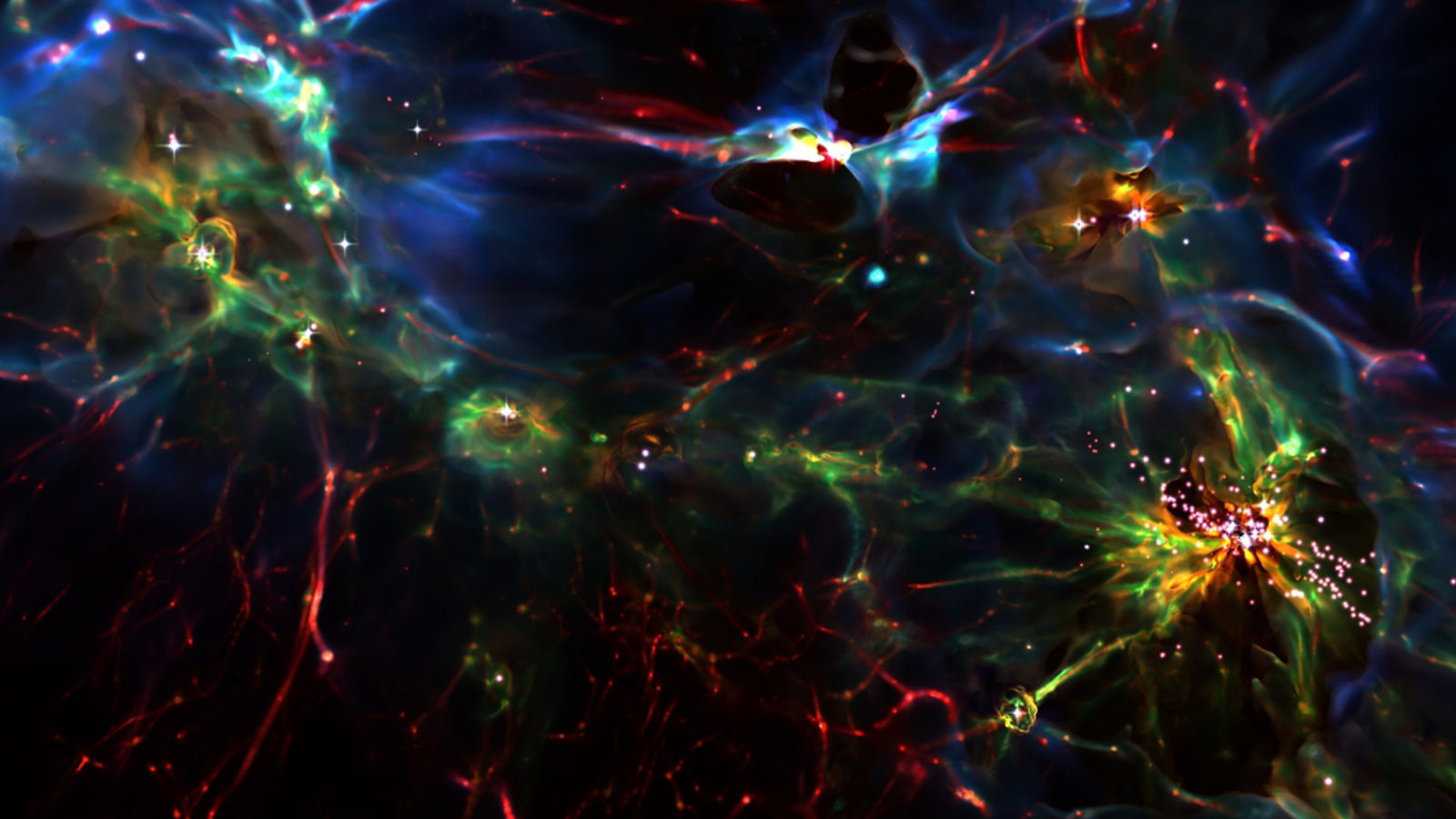With the warmth of holiday cheer in the air, Nottingham University theoretical physicist Clare Burrage and her colleagues decided to hit the pub after a conference in December 2014 and do what many physicists tend to do after work: keep talking about physics.
That evening’s topic of conversation: dark energy particles. The chat would lead to a new line of investigation at the Large Hadron Collider at CERN.
Dark energy is a catch-all term that scientists coined to describe whatever seems to be pushing the bounds of the universe farther and farther apart. If gravity were the only force choreographing the interstellar ballet of stars and galaxies, then—after the initial grand jeté of all of the matter and energy in the universe during the big bang—every celestial body would slowly chassé back to a central point. But that’s not what’s happening. Instead, the universe continues to drift apart—and it’s happening at an accelerating rate.
“We really don’t know what’s going on,” says Burrage. “At the moment, there are problems with all of our possible solutions to this problem.”
Most experiments studying this mysterious cosmic expansion look at intergalactic movements and precision measurements of the effects of gravity. Dark energy could be a property of spacetime itself, or just a huge misunderstanding of how gravity works on a cosmic scale.
But many theorists suspect that dark energy is a new type of force or field—something that changes how gravity works. And if this is true, then scientists might be able to put just the right amount of energy into that field to pop out a particle, a particle that could potentially show up in a detector at the LHC. This is the way scientists discovered the Higgs field, by interacting with it in just the right way for it to produce a Higgs boson.
“Cosmologists know that there is new physics we don’t understand, and all the evidence is pointing towards something very fundamental about our universe,” Burrage says. “The experiments on the LHC are also very interested in the fundamentals.”
The ATLAS and CMS experiments, the big general-purpose experiments at the LHC, search for new fundamental forces and properties of nature by recording what happens when the LHC smashes together protons at just under the speed of light. The giant detectors surround the collision points and map the energy and matter released from the collisions, giving scientists a unique view of the clandestine threads that weave together to build everything in the universe.
The theory Burrage and her colleagues were poring over at the pub predicted that if dark energy is a new type of field, it might produce light particles with strong and specific interactions with matter. “The main focus of LHC has been heavy particles, so we had to go back and re-interpret the data to look for something light,” she says.
Burrage worked with Philippe Brax of Université Paris-Saclay and Christophe Englert of the University of Glasgow to check publicly available data from the first run of the world’s most powerful collider for signs of a lightweight dark energy particles. They quickly determined that the signs they were looking for had not appeared.
With this simple model easily eliminated, they decided to take on another idea with a more cryptic signature. They knew that more complex analyses would require the expertise of an experimentalist. So in April 2016, along with Michael Spannowsky of Durham University in the UK, they published a new hypothesis in the scientific journal Physical Review Letters—and waited.
They found their experimentalist in Spyros Argyropoulos, a postdoc at the University of Iowa working on the ATLAS experiment, who read their article.
“The idea of testing dark energy was intriguing,” Argyropoulos says. “It’s not something we typically look for at the LHC, and making progress on this problem is a win-win for both cosmologist and particle physicist.”
Argyropoulos reached out to Burrage and her colleagues to define the parameters, and then he and a group of ATLAS scientists went to the data.
According to this new theory, dark energy particles should radiate off of energetic top quarks and show up in the detector as missing energy. Argyropoulos and his colleagues went through ATLAS analyses of top quarks and, in a separate search, looked at certain other collisions to see if any of them showed the signatures they were looking for. They did not.
While this might seem like a disappointing result, Argyropoulos assures that it’s anything but. “Physics isn’t just about finding the right answer,” he says. “It’s also about narrowing down all the possibilities.”
Burrage agrees: “Eliminating an idea with experimental data is a positive thing, even if it means our pet theory gets killed in the process. Theorists can always come up with more ideas, and it’s good for the field to have the spectrum of possibilities narrowed down.”
The landscape of dark energy theories is enormous. Burrage’s specialty is scouring that landscape, searching for theories that can be tested, and then proposing ways to test them.
“Ten years ago, nobody was thinking that collider physics could put constraints on dark energy searches,” she says. “Theories have to pass all relevant experimental tests, and it’s looking like surviving the Large Hadron Collider is going to be an important one to our field.”







